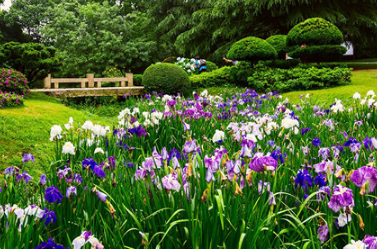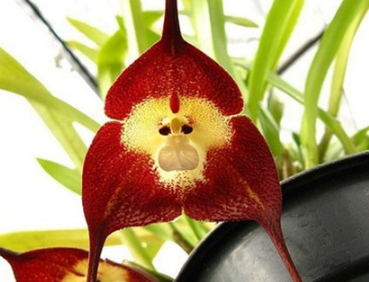The difference between the key points of maintenance of Wandai orchid and that of Qiandai orchid
Wandailan, which originated in India, refers to orchids hanging from trees. As the national flower of Singapore, it is rich in varieties and is a rare strong member of the orchid family. When it blossoms, the flower shape is strong and unrestrained.

Key points of maintenance of Wandailan
What does Wandailan need for maintenance?
1. Bask in the sun
The smell of sunshine will make it very strong. The heat obscures half of the sun and it can handle the rest. Let the sunshine come more violently in winter.
2. Give it some temperature
Wandailan is a tropical plant, which you must satisfy. Preferably around 25 ℃. If there is no frost and snow in the area, it smiles like flowers all the year round.
3. In fact, it needs water
All things are inseparable from the nourishment of water, although drought resistance can not be achieved without suitable water. It needs you to water it in the dry season, and the air humidity can be maintained at about 80%. It will be very cool.
4. Nutrients are essential.
People need nutrition, and so do plants. If you give it vitamins, it's not like that. Some 10:10:5 nitrogen, phosphorus and potassium would be fine. Just come once in about 8 days, it will be very happy.
5. The nourishment of Mother Earth
The soil in the basin must be well drained and well ventilated. It's like a man's home. No one wants their home to be flooded and their PM2.5 to exceed the limit.
6. Move less
If there is a pest, it is imperative to move. If you live well, why do you always change pots? Of course, it's normal to change for three or five years.
7. Future generations are not only needed.
First of all! Wandailan can not do it until its limbs grow bigger. This will ensure the survival of its children and grandchildren. Please operate with disinfected utensils and remember to apply medicine to the wound. It's not easy for anyone to get a knife. Pain is a common feeling of living things.
He is sick and needs your care.
No matter how strong there is a time of fragility, there is a moment of strength in fragility. When he is sick and needs you, take more care of him. In fact, if you are careful, as long as you pay more attention to it, it is still very strong.
The difference between Wandailan and Qiandailan
They are all orchids, one is called Qiandai and the other is called Wandai. What is the difference between them?
1. Wandailan and Qiandailan
You may be more familiar with the name "foreign orchid", but when you encounter different types of orchids, you don't know much about their names. Next, we will introduce to you a kind of orchid-Qiandai orchid and Wandai orchid.
Cymbidium, also known as tropical orchid, has a wide variety, such as Phalaenopsis, Dendrobium, Oncidium, Wandai Orchid and so on. Magnolia flowers are very large, the flower shape is also more strange, its flowering period is as long as 3 months. In particular, orchids need to be cultivated in bark, moss and other media, it has few diseases and insect pests, so flower friends like it.
2. Wan Dailan
It is the general name of the genus Cymbidium. There are approximately 60-80 species of this genus, which are widely distributed in China, India, Malaysia, the Philippines, Hawaii, New Guinea, Australia and other places. Wandailan is a typical epiphytic orchid; its calyx is well developed. The two lateral calyx are larger, which is the most conspicuous part of the whole flower, but the petal of Wandailan is smaller and the labellum is smaller. The flower patterns of Wandailan are very diverse, some are reversed and twisted, some are round and flat; the flowering period of Wandailan is so long that a flower can even bloom for several weeks in a row.
3. Qiandailan
Qiandai orchid is produced by the cross between Cymbidium and Wandai orchid, and its plant is relatively small, about half the size of Wandai orchid; the flowers are colorful, and there are flowering varieties all year round, but most of them are concentrated in spring or summer and autumn; the change of flower color is also very rich and varied.
Key points of cultivation of Wandai orchid and Qiandai orchid
Wandai orchid and Qiandai orchid are typical aerial orchids, which are extensive in nature, originated in Southeast Asia and like high temperature. The flowering period is from spring to autumn, and it takes five years to blossom if the seedlings are cultivated. At present, the cultivation and breeding of this genus is the most successful in Thailand.
Place: can be cultivated outdoors, but in the orchid shed, the plant will be more beautiful.
Planting: the roots of Wandai orchid and Qiandai orchid are stout and fat, and they love to be exposed to the air, so they are mostly cultivated in wooden frames or other pots that are very ventilated. Plant materials should be thick, such as charcoal, bricks, snake wood and so on.
Lighting: the required light is strong, similar to Dendrobium orchid, usually about 30% to 40% shaded by seedlings and 20% to 30% after middle seedlings. Adults receive as much sunlight as possible, and can be cultivated outdoors in spring and autumn.
Temperature: seedlings should be kept warm at 10 ℃ in winter to prevent frostbite. After growing up, it can develop normally in the range of 18 ℃ ~ 35 ℃, and it is the most favorable for growth and flowering in the range of 24 ℃ ~ 32 ℃.
Moisture: as Wandai orchid and Qiandai orchid are mostly planted in wooden frames, and the plant material is very thick, it is not easy to retain water, so we must rely more on air for water supply, so in addition to watering, the air humidity should be improved as much as possible. However, entering the flowering stage, reducing water supply and slightly dry environment are conducive to the formation of pedicels.
Fertilizer: if cultivated in a wooden frame, wrap the slow-acting fertilizer with gauze and hang it near the root. This orchid also uses more chemical fertilizers, spraying about 2000 times of water-soluble available fertilizer every 10 to 15 days. Increasing phosphorus and potassium fertilizer in autumn and winter can promote flowering. The difference between Wandailan and Qiandailan
Brief introduction of Wandailan and Qiandailan
You may be more familiar with the name "foreign orchid", but when you encounter different types of orchids, you don't know much about their names. Next, we will introduce to you a kind of orchid-Qiandai orchid and Wandai orchid.
Cymbidium, also known as tropical orchid, has a wide variety, such as Phalaenopsis, Dendrobium, Oncidium, Wandai Orchid and so on. Magnolia flowers are very large, the flower shape is also more strange, its flowering period is as long as 3 months. In particular, orchids need to be cultivated in bark, moss and other media, it has few diseases and insect pests, so flower friends like it.
The varieties of Wandai orchid are different from those of Qiandailan.
Wandailan is the general name of the genus Cymbidium. There are about 60,80 species of this genus, which are widely distributed in China, India, Malaysia, the Philippines, Hawaii, New Guinea, Australia and other places. Cymbidium is produced by the cross between Cymbidium and Wandailan.
The morphological characteristics of Wandai orchid and Qiandai orchid are different.
Wandai orchid is a typical epiphytic orchid; its calyx is well developed, and its two lateral calyx are larger, which is the most conspicuous part of the whole flower, but its petals are smaller and its lip petals are smaller; its flower patterns are very diverse, some are reversed and twisted, some are round and flat; its flowering period is so long that a flower can even bloom for several weeks in a row.
The plant of Qiandai orchid is relatively small, and its size is only about half of that of Wandai orchid; the flowers of Qiandai orchid are colorful, and there are flowering varieties all year round, but most of them are concentrated in spring or summer and autumn; the color changes of Qiandai orchid are also very rich and varied.
- Prev

The difference between the daily maintenance methods of Acorus calamus and Acorus calamus
Acorus calamus is an aquatic flower with persistent roots, and its stem can reach more than 15cm. This paper introduces the breeding methods of Acorus calamus, so that more people can understand it. Daily maintenance methods of Acorus calamus: a detailed description of the cultivation methods of Acorus calamus. There are usually two kinds of calamus, one of which is planted in water.
- Next

The main value of the culture method of monkey face and small dragon orchid
Monkey face Little Dragon Orchid, also known as monkey face orchid, is another masterpiece of nature's miraculous craftsmanship, not only hitting our big brother Sun WuKong, but also a faint smell of flowers, which makes people really want to start a pot and watch it every day! The Culture method of Monkey face Little Dragon Orchid
Related
- Fuxing push coffee new agricultural production and marketing class: lack of small-scale processing plants
- Jujube rice field leisure farm deep ploughing Yilan for five years to create a space for organic food and play
- Nongyu Farm-A trial of organic papaya for brave women with advanced technology
- Four points for attention in the prevention and control of diseases and insect pests of edible fungi
- How to add nutrient solution to Edible Fungi
- Is there any good way to control edible fungus mites?
- Open Inoculation Technology of Edible Fungi
- Is there any clever way to use fertilizer for edible fungus in winter?
- What agents are used to kill the pathogens of edible fungi in the mushroom shed?
- Rapid drying of Edible Fungi

